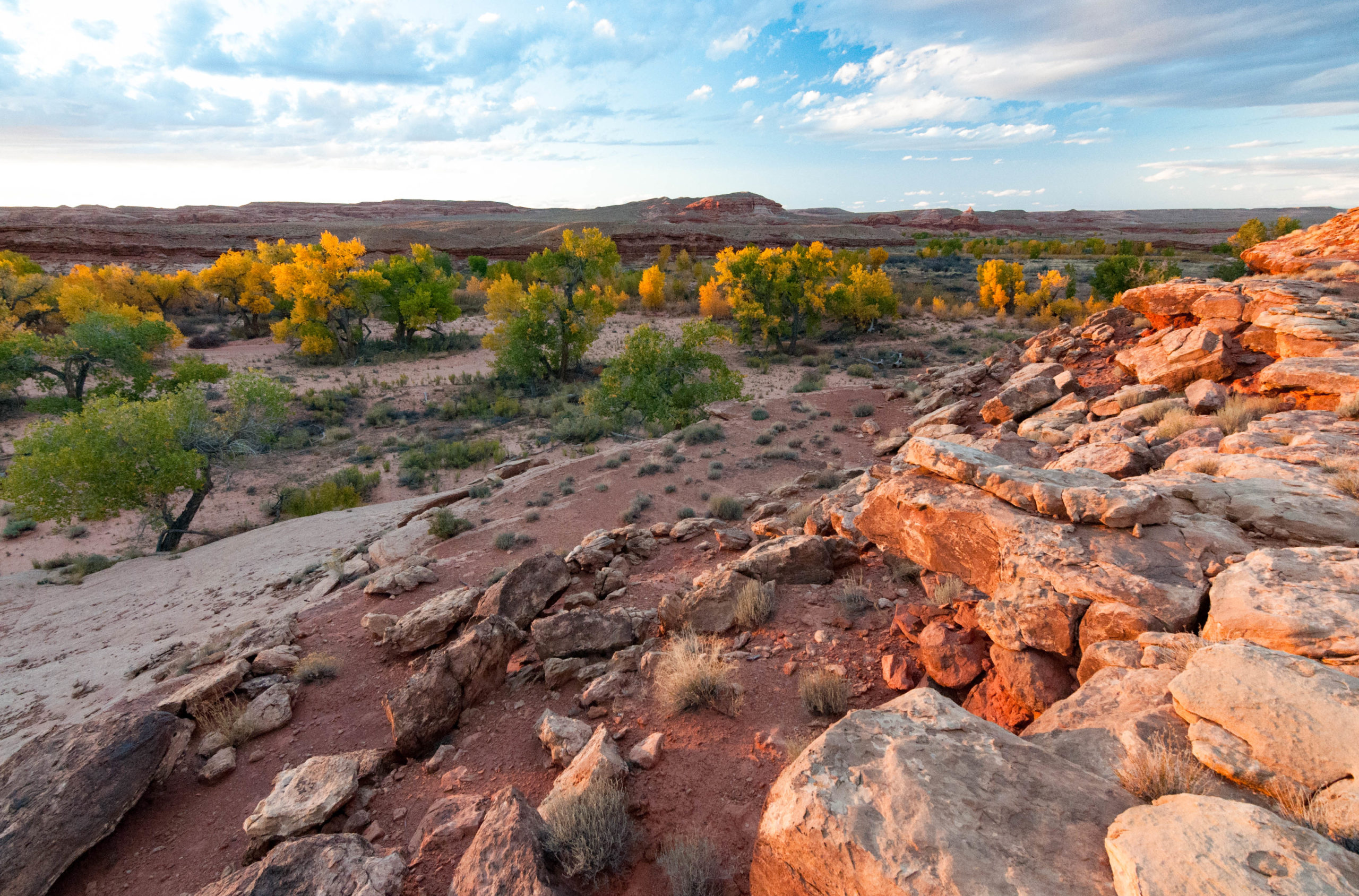
For Immediate Release
Contact: Laura Peterson, Southern Utah Wilderness Alliance 801-236-3762, laura@suwa.org
Salt Lake City, UT (August 24, 2020) – On Friday, August 21, the Bureau of Land Management released the final motorized vehicle travel management plan for the San Rafael Desert in eastern Emery County, Utah. Left unchecked, this plan will forever change the area’s stunning and remote wild lands, turning it into a playground for off-road vehicles.
The San Rafael Desert is a sublime area of Utah’s backcountry, encompassing the newly-designated Labyrinth Canyon Wilderness and wilderness-quality lands such as Sweetwater Reef and the San Rafael River. It features stunning redrock canyons, important cultural sites, and an outstanding diversity of native species, many found nowhere else but this corner of Utah. The Bureau’s plan inundates this remote area with off-road vehicle routes, more than doubling the miles open to motorized vehicles from 300 miles to more than 765 miles.
“At this point in the Trump Administration, the Bureau of Land Management has abandoned even the pretense of seeking balance in public land management,” said Laura Peterson, staff attorney at Southern Utah Wilderness Alliance. “Instead of accommodating the diverse array of public land resources and user groups and developing a reasonable travel plan that ensures access to public lands while preserving the backcountry, the Bureau’s travel plan does the opposite. It designates virtually any cow path, wash bottom and line on a map as open to off-road vehicles.”
Federal law requires the Bureau of Land Management to minimize impacts to natural and cultural resources when designating motorized vehicle routes. The agency must demonstrate that it has done so for both every route designated, and the travel plan as a whole. This includes minimizing damage to soils, watershed, vegetation, wildlife habitat, and cultural sites; minimizing the harassment of wildlife as well as conflicts between different public land user groups; and minimizing impacts of motorized vehicle routes on wilderness values like naturalness and solitude. The Bureau’s San Rafael Desert travel plan falls woefully short of meeting its legal obligation.
“By doubling the miles of off-road vehicle trails, this short-sighted plan designates an unmanageable spiderweb of routes that will forever change the San Rafael Desert, one of Utah’s quietest places. This is public land management at its worst,” said Steve Bloch, Legal Director at Southern Utah Wilderness Alliance.
The San Rafael Desert travel plan is the first of thirteen travel plans that the Bureau of Land Management will complete over the next six years as a part of a court-supervised settlement agreement. These thirteen travel plans will determine where motorized vehicles will be allowed across millions of acres of federal public lands in some of Utah’s wildest public lands, including the Dirty Devil, San Rafael Swell and Vermillion Cliffs.
Additional Resources:
Photos of areas affected by the plan.
The BLM’s e-planning page on the project.
###

